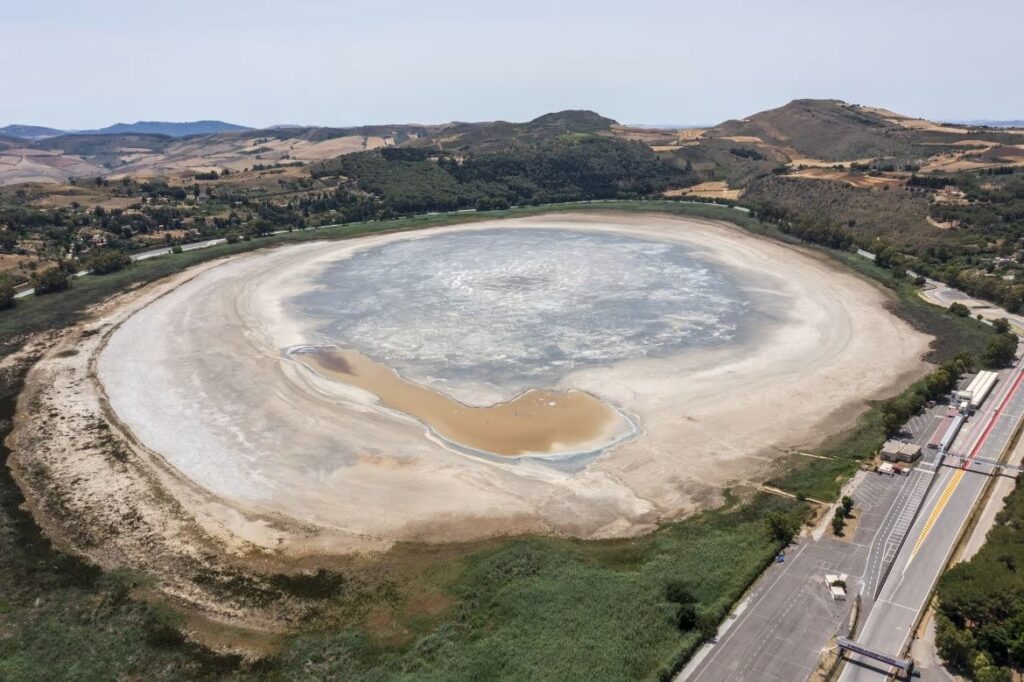Pergusa Lake, once a pristine body of water nestled in central Sicily, has all but disappeared: a victim of a lethal combination of drought and neglect. Where once stretched a lake basin rich in flora and fauna, now stands a desolate landscape of cracked mud.
But what are the causes of this phenomenon?
- Extreme drought: rainfall in recent years has been drastically lower than average, drying up aquifers and fuelling an unprecedented drought;
- Climate change: rising global temperatures have intensified the drought phenomenon, making it more frequent and severe ;
- Lack of action: no adequate measures have been taken to counter the falling water level, such as restoring vegetation around the lake or building water-saving infrastructure.
Photo: Getty Images
The disappearance of Lake Pergusa is not only a wound to the environment, but a veritable silent apocalypse that has wiped out the rich biodiversity that inhabited it. Migratory birds that flew through the sky, amphibians that sang their tune, fish that darted among the algae: the lake’s flora and fauna have been decimated, victims of a habitat that is now inhospitable. A natural legacy wiped out, a precious heritage lost.
Among the victims of this silent tragedy are also the pollinators, insects precious for the survival of many plant species and for the entire ecosystem. The disappearance of Lake Pergusa has in fact led to the loss of precious habitats for bees, butterflies and other pollinating insects. Without them, the food chain risks collapsing, with devastating consequences for agriculture and biodiversity in general.
Lake Pergusa is not just an isolated case. It is an alarm bell that rings loudly to remind us of the fragility of our planet and the need for a concrete commitment to its protection. We must learn from our mistakes and act urgently to prevent other tragedies like this one from happening again.
What we can do:
- Tackle climate change: reducing greenhouse gas emissions and mitigating the effects of climate change is key to averting increasingly extreme drought events;
- Protect water resources: taking measures to conserve water, such as reusing wastewater and combating water pollution, is essential to ensure the availability of this precious resource for future generations;
- Environmental restoration: taking action to restore the ecosystem of Lake Pergusa and other degraded environments by planting trees and creating wetlands is a necessary step to rebuild the biodiversity and resilience of the planet.
The future of Lake Pergusa is uncertain, but its fate is in our hands. If we choose to act today, with awareness and responsibility, we can still avoid the worst and build a greener, more sustainable future for ourselves and for generations to come.

